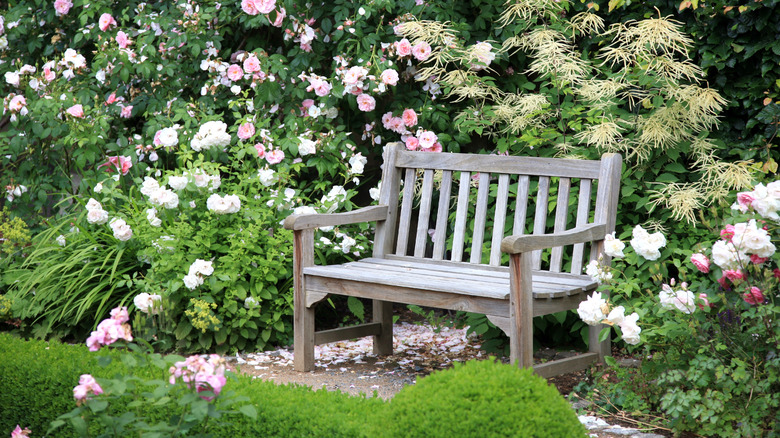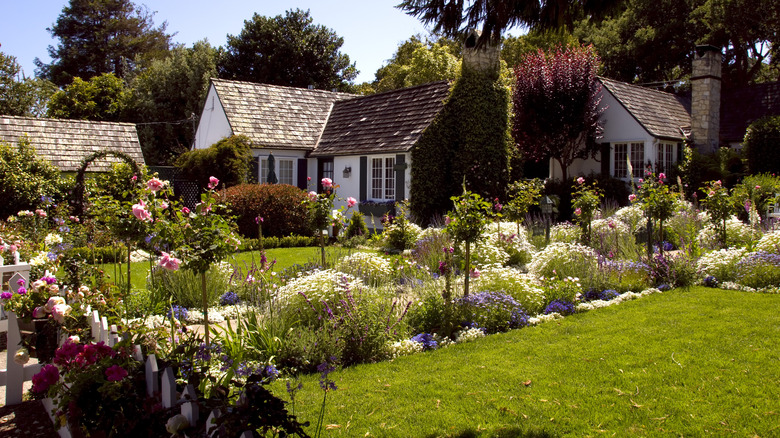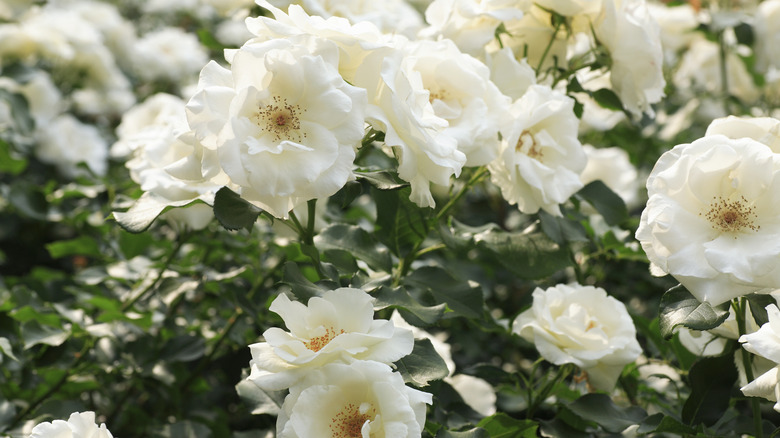The Trendy Garden Color Scheme That Will Never Go Out Of Style
The trendy garden color scheme that will never go out of style combines the timeless elegance of green and white. This classic combination has stood the test of time, bringing a sense of freshness, sophistication, and tranquility to any outdoor space. Whether you have a sprawling backyard or a small urban garden, the green and white color scheme is versatile enough to work in any setting and offers a myriad of design possibilities.
Green, the color of nature, symbolizes growth, harmony, and rejuvenation. It is the dominant color in most outdoor spaces and provides a sense of serenity and balance. Green leaves, lawns, and foliage create a lush backdrop that elicits feelings of relaxation and tranquility. By incorporating various shades of green, from vibrant emerald to soft sage, you can add depth and visual interest to your garden.
White, on the other hand, represents purity, simplicity, and elegance. It is the perfect companion to green, creating a crisp and clean aesthetic. White flowers, such as roses, lilies, and daisies, add a touch of sophistication and grace to the garden as well as relaxing aromatics. Their delicate blooms stand out against the lush green foliage, creating a striking contrast. Additionally, white can be used in garden accessories, such as furniture, planters, or decorative elements, to further enhance the overall design.
Benefits of a green and white garden
One of the key advantages of the green and white color scheme is its versatility. It complements any architectural style, from contemporary to traditional or even modern, and can adapt to different garden themes, such as formal, cottage, or tropical. Whether you prefer a minimalist approach or a more elaborate design, this color combination can be tailored to suit your personal taste.
Moreover, green and white are considered neutral colors in garden design, allowing you to experiment with other accent colors if desired. For instance, you can introduce splashes of vibrant colors, like purple, pink, or yellow, to create focal points or add interest to specific areas of the garden. These accent colors will pop against the green and white backdrop, creating a visually captivating and dynamic outdoor space. In order to infuse these additional colors, consider layering flowers, shrubs, and decorative grasses in your favorite hues to reflect your personal touch.
Perhaps most importantly, the green and white color scheme is timeless. Unlike fleeting trends that come and go, this classic combination has maintained its popularity throughout the years. It exudes a sense of elegance and sophistication that never goes out of style. Whether you choose to follow current design trends or prefer a more traditional approach, the green and white color scheme will continue to be a reliable choice for a stunning garden.
The best plants for a green and white garden
When selecting verdant greens for your garden, consider hostas. These leafy perennials come in various shades of green, adding texture and depth to the garden and creating an inviting effect. Another great option is the fern. Maidenhair ferns and Boston ferns with their delicate, feathery fronds, bring grace and charm to the garden as well as unique textures. Furthermore, hydrangeas are fantastic due to their large, round clusters of flowers in white or shades of green, providing a fascinating dynamic to the garden. Hydrangeas are also available in pinks, purples, and blues for an additional pop of color.
As for the whites, roses are an elegant and class choice. Iceberg and Easy Elegance Snowdrift are popular choices, exuding beauty with their delicate blooms and fragrance. Additionally, white phlox are perennial plants that produce clusters of fragrant, white flowers, attracting butterflies and bees to bring life to your garden. Finally, white tulips showcase classic spring bulbs that herald the arrival of a new season, creating a dramatic impact when planted in clusters or drifts.


